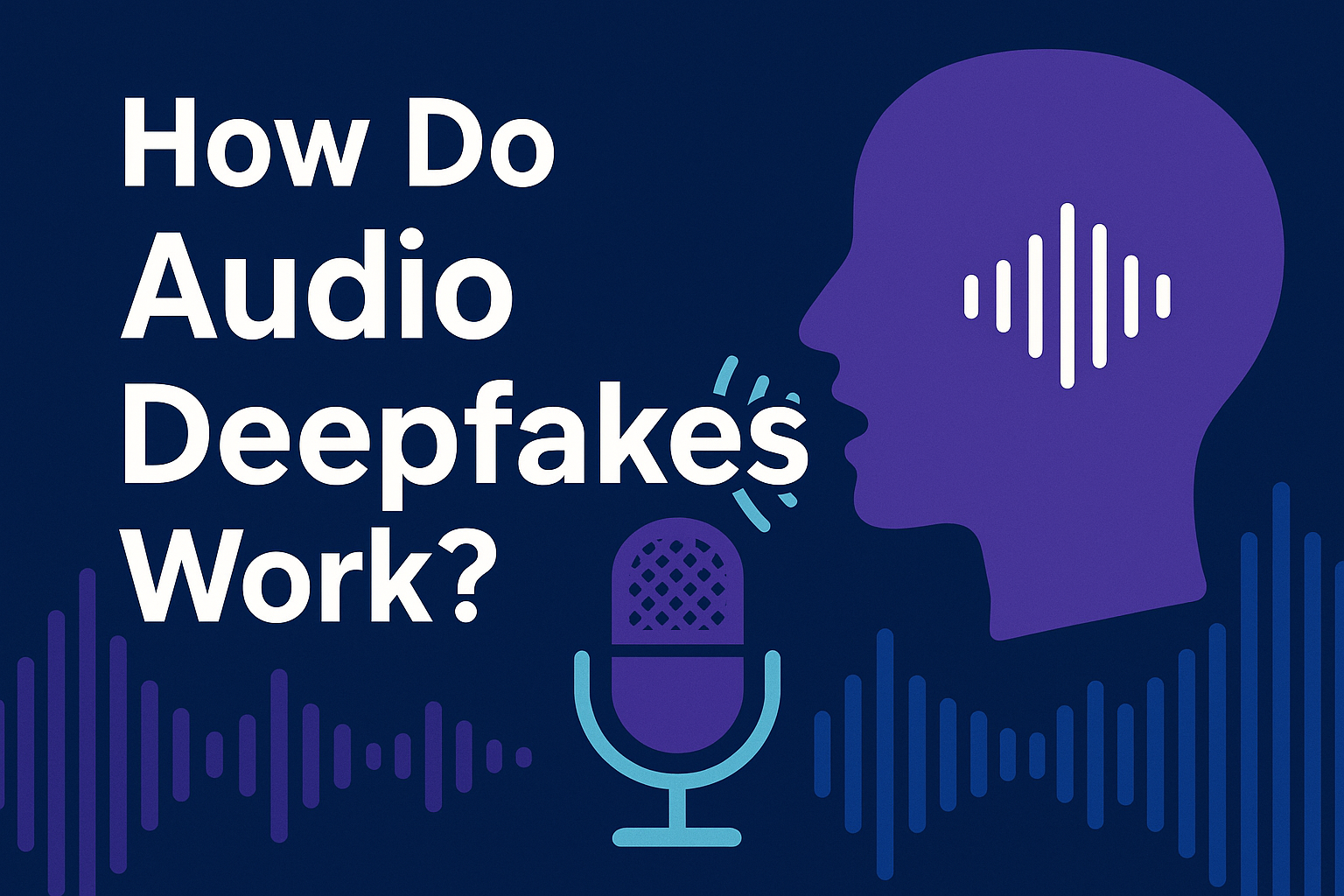How Do Audio Deepfakes Work?
Founder • 2025-12-08
How Do Audio Deepfakes Work?
Audio deepfakes are one of the most alarming threats in modern cybersecurity. From impersonating CEOs to bypassing identity verification systems, synthetic voice technology is becoming increasingly difficult to detect—and increasingly accessible.
In this article, we’ll break down how audio deepfakes work, the AI behind them, and how organizations are defending themselves using tools like Avina by Verifia, a secure AI voice agent that can detect and deflect audio-based social engineering attacks in real time.
What Are Audio Deepfakes?
Audio deepfakes are AI-generated voice recordings designed to mimic a real person’s speech, tone, and cadence. Unlike traditional voice recordings, these are created entirely using machine learning models—no real audio from the impersonated person is required beyond a short sample.
In the wrong hands, this technology can be used for:
- Impersonating executives in CEO fraud or business email compromise (BEC) scams
- Tricking IT helpdesk agents into resetting passwords or unlocking accounts
- Bypassing voice biometric authentication systems
- Launching vishing (voice phishing) attacks at scale
How Do Audio Deepfakes Work?
Creating an audio deepfake typically involves the following steps:
1. Voice Sample Collection
Attackers collect a few minutes of someone’s voice—often from:
- Voicemails
- YouTube videos
- Podcasts
- Conference calls
- Social media clips
Just 3–5 minutes of clear audio is often enough to clone someone’s voice convincingly.
2. Voice Cloning Using AI
Machine learning models are then trained to mimic the target’s speech patterns. Tools used include:
- Text-to-Speech (TTS) models like Tacotron 2, Vall-E, or ElevenLabs
- Voice conversion models that transform one speaker’s voice to another
- Generative Adversarial Networks (GANs) for added realism
These systems can generate entirely new sentences in the target’s voice—even things they never actually said.
3. Real-Time Synthesis and Deployment
The deepfake can then be:
- Used in pre-recorded audio scams
- Combined with real-time voice modulation for live calls
- Integrated with chatbots or interactive voice response (IVR) systems for more complex attacks
Real-World Audio Deepfake Attacks
Audio deepfakes have already caused real damage:
- In 2019, attackers used AI-generated audio of a CEO to trick a UK-based company into wiring $243,000 to a fraudulent account.
- In 2023, IT helpdesks became a target, with deepfake voices impersonating employees locked out of their accounts.
These attacks are hard to detect with the human ear alone—and that’s where AI-based defense comes in.
How to Defend Against Audio Deepfakes
1. Zero-Trust Voice Authentication
Tools like Avina by Verifia use multi-layered authentication to verify callers. Instead of relying on voice alone, Avina checks:
- Device fingerprinting
- Behavioral biometrics
- Knowledge-based authentication
- Access history and risk signals
This zero-trust approach makes it virtually impossible for deepfake voices to bypass security.
2. Deepfake Detection Algorithms
Advanced systems can analyze:
- Audio waveform anomalies
- Breathing patterns, unnatural pacing, or robotic modulation
- Frequency artifacts common in synthetic speech
Avina actively scans for these red flags in every interaction, alerting teams if a synthetic voice is suspected.
3. Automated Helpdesk Guardrails
AI voice agents like Avina can also intercept and triage inbound calls, ensuring that no sensitive action—like a password reset—is completed without verified identity.
This stops attackers before they reach human agents.
Why It Matters for IT Helpdesks
Helpdesks are often the weakest link in security. An attacker doesn’t need to hack a system—just convince someone to let them in.
Voice deepfakes supercharge this attack vector by:
- Sounding urgent and authoritative
- Creating a false sense of familiarity
- Circumventing voice recognition systems
Avina by Verifia is built specifically to handle this problem. It automates secure IT workflows like password resets, account unlocks, and MFA verifications—while detecting and deflecting deepfake attempts.
Final Thoughts
So, how do audio deepfakes work? It’s simple: AI learns to speak like you, and attackers use it to bypass trust-based systems. But you don’t have to be vulnerable.
By adopting zero-trust voice authentication, deploying tools like Avina, and training teams on deepfake risks, organizations can stay one step ahead of this evolving threat.
Worried about voice deepfakes targeting your IT helpdesk?
Visit verifia.io to learn how Avina can protect your team from vishing attacks and stop audio impersonators before they get through the front door.



